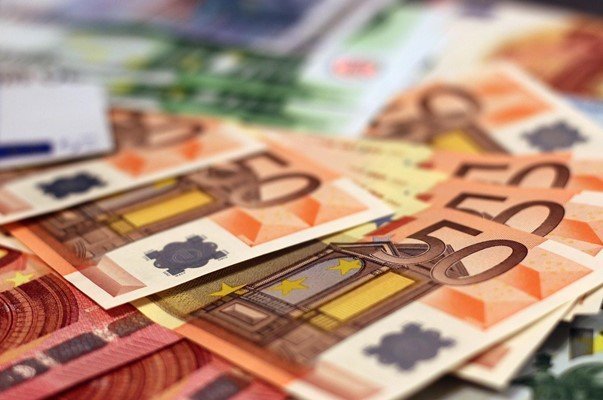Financial statements can seem complex, but they are simply reports that show your financial health. Whether for a business or personal use, understanding them helps you make smarter decisions. This guide breaks down the three core statements—the income statement, balance sheet, and cash flow statement—into easy-to-understand parts, showing you exactly how they work and how to create them. Mastering these is the first step toward true financial control.
What are the Three Core Financial Statements?
To get a complete picture of your financial situation, you need to look at it from different angles. That’s what the three main financial statements help you do. Think of them as three different lenses to view your money.
Each report serves a unique purpose. The income statement tells you about profitability over time, the balance sheet gives a snapshot of your net worth on a specific day, and the cash flow statement shows how cash is moving in and out.
Together, these three reports provide a comprehensive overview of a business’s performance and stability. You can’t rely on just one; they work as a team to give you the full story and help you guide your financial future effectively.
Breaking Down the Income Statement
The income statement is often the first report people look at because it answers a very important question: Are you making money? Also known as the Profit and Loss (P&L) statement, it summarizes your revenues and expenses over a specific period, like a month or a year.
The formula is simple: Revenue – Expenses = Net Income. A positive net income means you have a profit, while a negative number indicates a loss.
To build one, you list all your sources of income and then subtract all your costs. These costs can be broken down to give you more insight.
- Revenue: This includes all money earned from sales of goods or services.
- Cost of Goods Sold (COGS): These are the direct costs of producing what you sell.
- Operating Expenses: This covers other costs like rent, salaries, utilities, and marketing.
This statement is crucial for assessing your operational efficiency. By analyzing your P&L statement, you can identify where your money is being spent and find opportunities to cut costs or boost revenue.
Understanding Your Balance Sheet: A Financial Snapshot
Unlike the income statement which covers a period of time, the balance sheet shows your financial position on a single day. It provides a snapshot of what you own (assets) and what you owe (liabilities). The difference between them is your equity.
The entire balance sheet is based on a fundamental equation: Assets = Liabilities + Equity. This equation must always be in balance, hence the name of the report.
Assets are resources with economic value, like cash or property. Liabilities are your debts to others, such as loans or bills you need to pay. Equity is what would be left over for the owners if all assets were sold and all liabilities were paid off.
Here is a simplified example of how it works:
| Assets | Liabilities + Equity |
|---|---|
| Cash: $10,000 Equipment: $15,000 Total Assets: $25,000 | Loan: $5,000 Owner’s Equity: $20,000 Total Liabilities & Equity: $25,000 |
Tracking Your Money with the Cash Flow Statement
Profit doesn’t always mean cash in the bank. The cash flow statement is vital because it tracks the actual movement of cash over a period. It shows where your cash came from and where it went, giving you a clear picture of your liquidity.
This statement is typically broken into three main activities.
- Operating Activities: Cash generated from your main business operations, like sales and payments for expenses.
- Investing Activities: Cash used for or generated from investments, such as buying or selling equipment or property.
- Financing Activities: Cash from investors or banks, as well as cash paid to shareholders or to repay debt.
Understanding your cash flow is critical for preventing shortages that could cripple your business. A company can be profitable on its income statement but still fail if it doesn’t have enough cash to pay its bills on time.
Why Regular Review is Key to Your Success
Creating financial statements is not a one-time task. The real power comes from reviewing them regularly—monthly or quarterly. This practice allows you to spot trends, catch problems before they grow, and make informed strategic decisions.
Consistent analysis helps you answer important questions. Is your revenue growing? Are your expenses getting too high? Do you have enough cash to expand? Without this data, you are essentially flying blind.
Making financial review a regular habit transforms these reports from historical documents into a roadmap for the future. It empowers you to steer your business or personal finances toward growth and stability, rather than just reacting to events as they happen.
Frequently Asked Questions about Financial Reports
How often should I create financial statements?
For businesses, it’s best to prepare them monthly to keep a close eye on performance. For personal finances, reviewing them quarterly or annually is often sufficient to track progress toward your goals.
What is the difference between profit and cash flow?
Profit is the money left over after all expenses are subtracted from revenue on an income statement. Cash flow is the actual net movement of cash into and out of your bank account, which includes loan payments and asset purchases not on the income statement.
Can I create financial statements for my personal finances?
Absolutely. A personal balance sheet can show your net worth, while an income statement (or budget) tracks your income versus spending. This is a great way to manage your money and plan for the future.
Which financial statement is the most important?
All three are important because they show different things. However, many business owners consider the cash flow statement the most critical for day-to-day survival, as a lack of cash can quickly lead to failure.
What is ‘equity’ on a balance sheet?
Equity represents the owner’s stake in the company. It’s the value of the assets after all debts (liabilities) have been paid off. It can also be called “net worth” in personal finance.







Leave a Comment